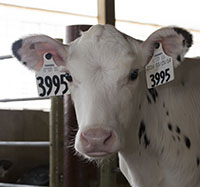 In recent months, the U.S. Food and Drug Administration approved both a genetically modified animal and vegetable that could be consumed by people. As expected, some groups are outraged by the thought and have filed litigation to stop the faster-growing AquaBounty Salmon and reduced-bruising Innate Russet Burbank potato. In the case of the salmon, that fish grows twice as fast as its wild cousins while the potato can withstand the conditions that led to the devastating Irish Potato Famine and caused well over one million Irish people to starve to death.
In recent months, the U.S. Food and Drug Administration approved both a genetically modified animal and vegetable that could be consumed by people. As expected, some groups are outraged by the thought and have filed litigation to stop the faster-growing AquaBounty Salmon and reduced-bruising Innate Russet Burbank potato. In the case of the salmon, that fish grows twice as fast as its wild cousins while the potato can withstand the conditions that led to the devastating Irish Potato Famine and caused well over one million Irish people to starve to death. The results of this litigation could lead to a whole host of genetically modified organisms (GMO). One of which could be GMO polled cattle. Those cattle would be created using the CRISPR technology outlined in Kirk Sattazahn's April 10, 2015, article "How genetic editing will impact your future."
It's important to note that GMO polled cattle could be years from reaching the marketplace and being raised on mainstream dairy farms. That's because consumers or judges may reject the entire GMO food premise.
In the meantime, reassure consumers that already existing polled cattle are a natural occurrence. Some media outlets are confusing the entire issue when talking about polled projects that are researching inserting the hornless or polled trait into cattle. One such outlet was the widely respected The Wall Street Journal in its Friday, April 1, 2016, article "FDA Challenged on GMO Animals."
For Angus, the polled trait traces back to 16th century Scotland. Holsteins and Jerseys also have the polled trait - a dominant trait that trumps the recessive horned condition.
As far as using CRISPR (Clustered regularly-interspaced short palindromic repeats), a company called Recombinetics is researching how to insert polled into all cattle.
(c) Hoard's Dairyman Intel 2016
April 25, 2016








